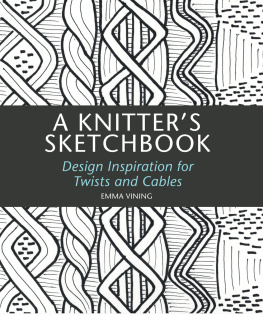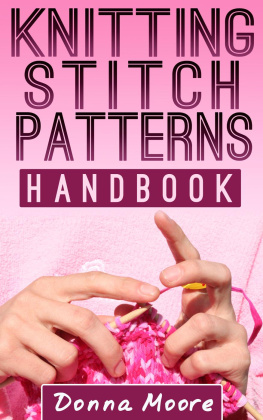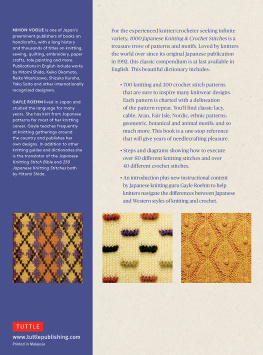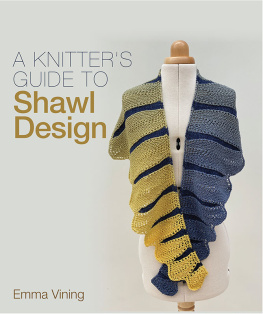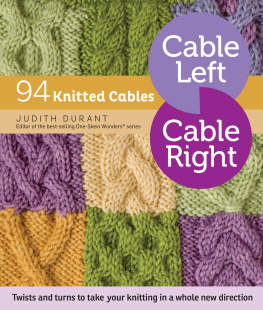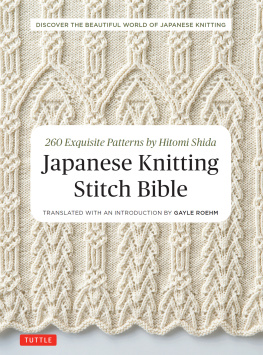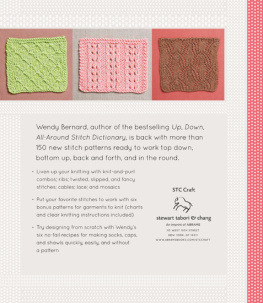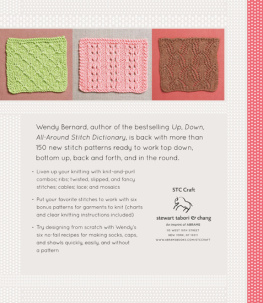A KNITTERS
SKETCHBOOK
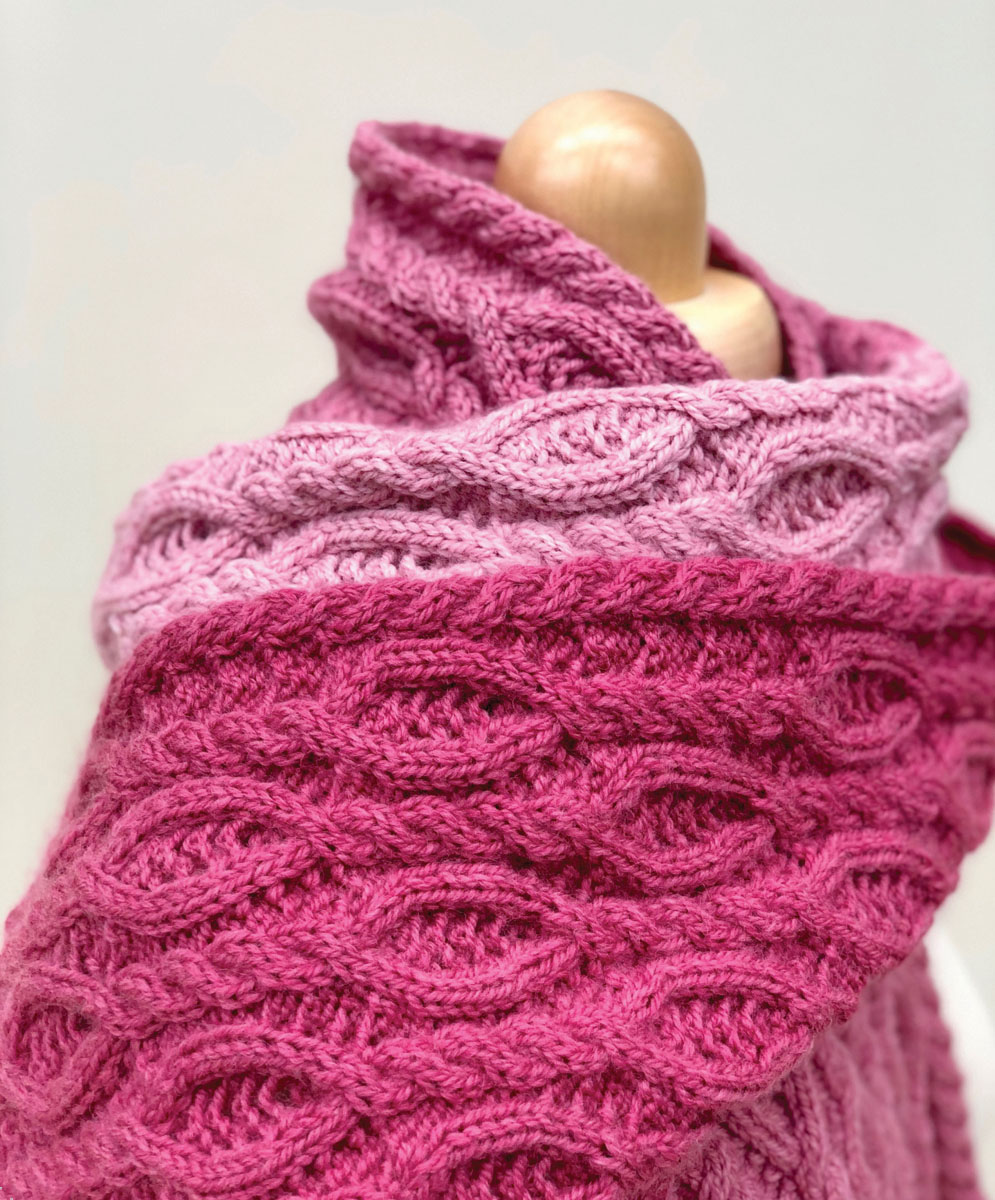
A KNITTERS
SKETCHBOOK
Design Inspiration for
Twists and Cables
EMMA VINING

THE CROWOOD PRESS
First published in 2019 by
The Crowood Press Ltd
Ramsbury, Marlborough
Wiltshire SN8 2HR
www.crowood.com
This e-book first published in 2019
Emma Vining 2019
All rights reserved. This e-book is copyright material and must not be copied, reproduced, transferred, distributed, leased, licensed or publicly performed or used in any way except as specifically permitted in writing by the publishers, as allowed under the terms and conditions under which it was purchased or as strictly permitted by applicable copyright law. Any unauthorised distribution or use of this text may be a direct infringement of the authors and publishers rights, and those responsible may be liable in law accordingly.
British Library Cataloguing-in-Publication Data
A catalogue record for this book is available from the British Library.
ISBN 978 1 78500 538 1
Frontispiece: Tulip-bud scarf (see ).
CONTENTS
INTRODUCTION:
WHAT IS A KNITTERS SKETCHBOOK?
The title of this book reflects a design-led approach to creating knitting stitch patterns. This method of design combines my love of knitting with an awareness of pattern inspiration at different scales and from diverse locations. Inspiration for twist and cable designs can be seen everywhere in the natural world and in the urban environment, from cracks in pavement to patterns in the walls of buildings and from posts and pillars. Sometimes just looking down at the ground can provide the best source material, from an elegant mosaic pattern in a town plaza to shadows cast by the sun shining on railings on a bridge.
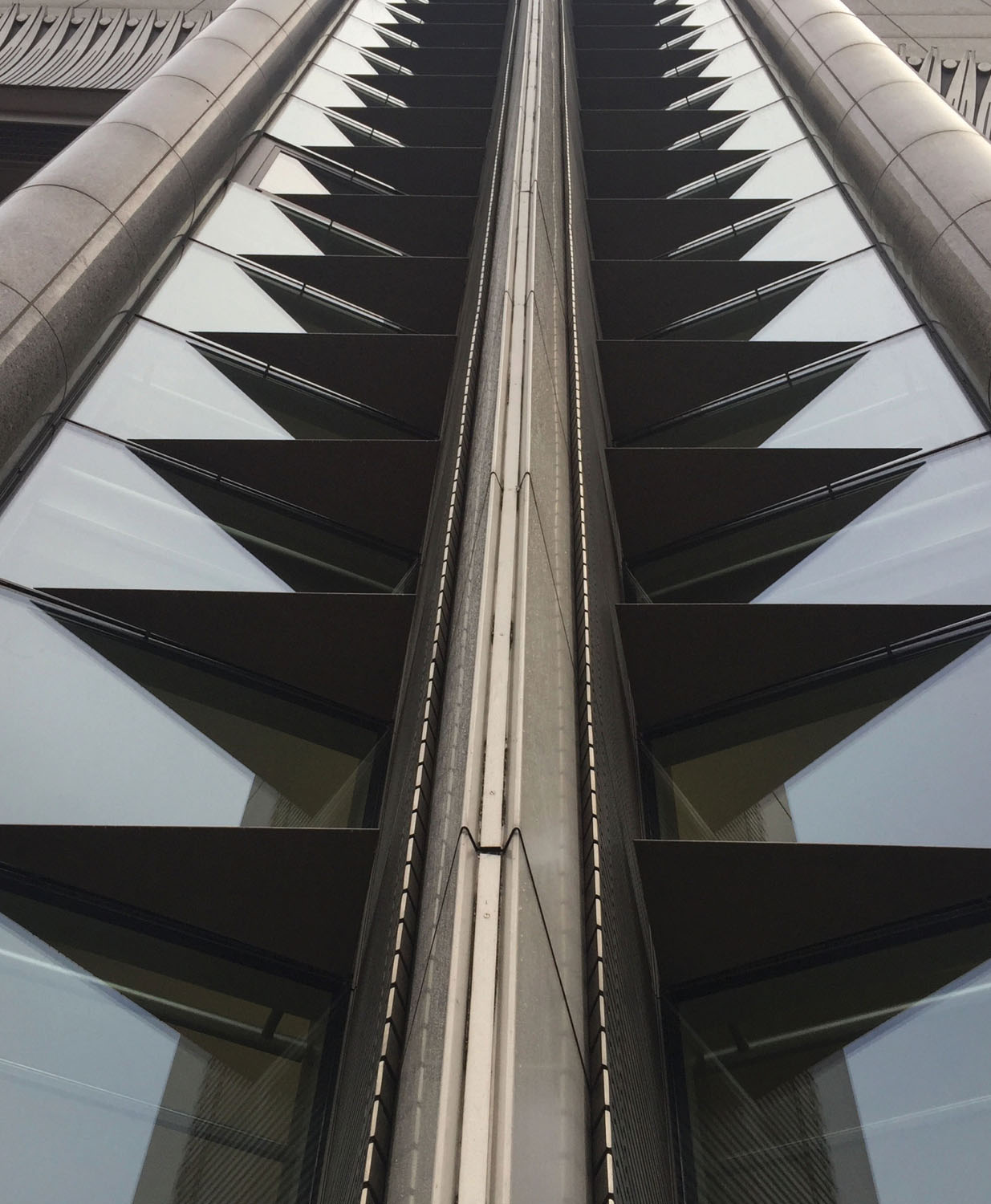
Fig. 1 Glass facade of a staircase, Brussels, Belgium.
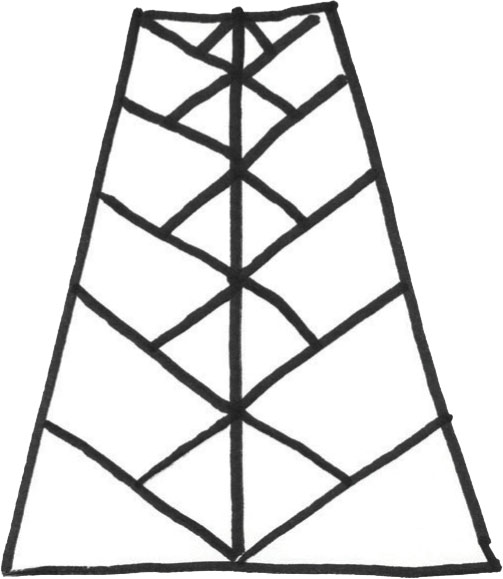
Fig. 2 Sketch of lines and shapes inspired by the glass facade of a staircase.
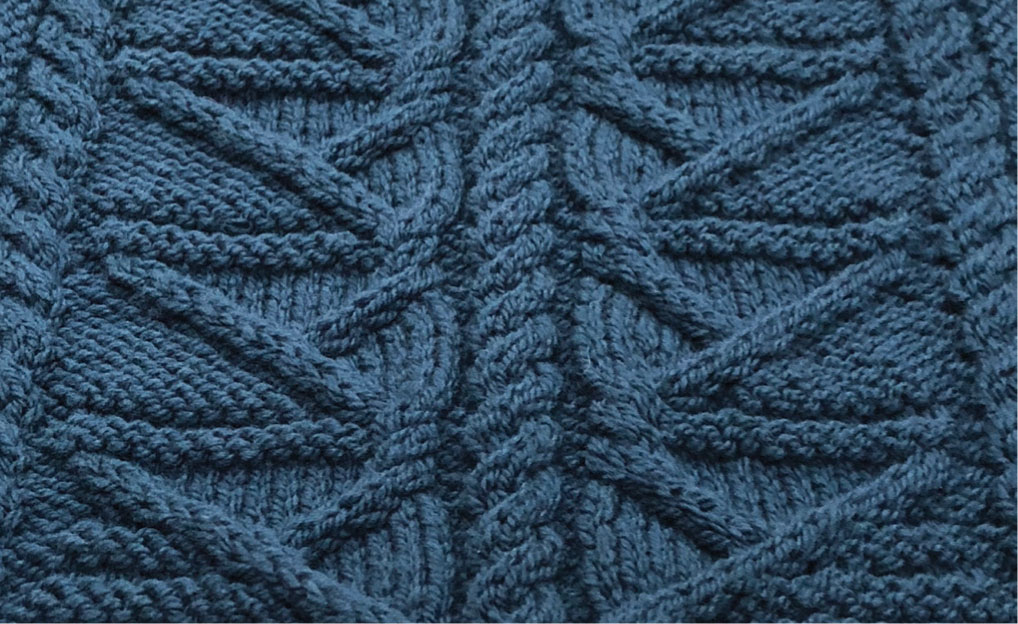
Fig. 3 Detail of Agora wrap.
Photographing and drawing this inspiration provides me with a reminder of what caught my eye. This can be a basic sketch, a detailed drawing or a simple written note. A sketch or note makes you really think about what you are observing. Along with knitted swatches, these images and sketches form the basis on my knitters sketchbook. Using this kind of inspiration, combined with a wide range of knitting techniques, allows the development of new and original knitting stitch patterns. ).
To get the most out of this book, all that is required is an open mind and a willingness to try out ideas. My aim is to encourage you to explore and experiment and to make new and beautiful knitting designs that reflect a personal interaction with the world around you.
How to use this book
This book can be used in many different ways: as a stitch library, as a collection of knitting patterns or as a starting point to inspire your own designs for your own personalized knitters sketchbook. I have used many examples to show you my design process. These examples can be used to inspire your own new stitch patterns, or you can go straight to the knitting-pattern projects at the end of each chapter in Parts 2 and 3. Each of the ten accessory projects illustrates some of the twist and cable techniques that I use to interpret my source material. There is a progression in complexity within the book, from stitch patterns inspired by straight lines to designs full of complex curves. However, you can dip in and out of the chapters in whichever order you prefer.
The first part of this book, , about yarn and tools, highlights the importance of yarn choice, both in terms of fibre and weight, and reviews the knitting equipment needed to interpret inspiration sources for twists and cables.
The second and third parts of this book are all about designing stitch patterns by using inspiration-source images and sketches. In : Enhanced Twists and Cables. These chapters explore a selection of additional knitting techniques, such as those involving texture and openwork, using them to add detail to the twist and cable designs.
Throughout this book, I will show you how I look at inspirational source material as a way of developing designs. Looking for pattern all around you leads to fascinating stitch combinations that can enhance and enrich any knitted project. I hope that this book will inspire your own creativity and be the launch pad for a multitude of amazing new knitting designs!
Creating a knitters sketchbook
This section explains some of the steps involved in creating a knitters sketchbook. The sketchbook will be both an individual record of inspiration and designs and a reference source for bringing ideas together and moving them on to even more creative designs. As well as knitted samples, rough sketches, photos and clippings from magazines, your knitters sketchbook can also include an online element, by using sites such as Pinterest, Instagram and other online sources to help record and collect thoughts and ideas together.
As a collection of ideas builds up, a variety of ways to store them will be needed. Sketches and swatches can be stored in a folder, a ring binder or a larger sketchbook. Photographs and links to websites may all be kept in a digital folder. This will be very much a personal preference, and the most important aspect of the sketchbook is that it works for the individual designer. All of the parts of the sketchbook therefore do not need to be in the same place. For example, photographs may be stored digitally, but all of the sketches can be made in an A5-size paper notebook. I encourage you to experiment with different methods, to find the way of working that suits you best.
My own knitters sketchbook includes my inspiration sources, my pen and pencil sketches and, most importantly, my knitted swatches. Knitted swatches are a response to all of the ideas that have been collected, and they form the basis for new stitch-pattern designs. Throughout this book, examples will illustrate ways to look at source material and demonstrate how to select knitting techniques that represent the lines and patterns present within the sources.
I have found it very helpful to use some specific approaches for recording ideas, building up a personalized stitch library and creating new projects. My favourite designs have been inspired by sources such as architecture and plants that have distinctive lines and shapes within them. I use my initial sketches and drawings to highlight the parts of the image that I want to translate into my knitted swatch. An example of this process is the Agora-wrap project in the diamonds chapter (: Line and Shape. Using this project as an example, let us take a closer look at the design process of a knitters sketchbook.
Inspirational source material
The starting point for any new design is the inspirational source material. This source may be one image or a collection of ideas and sketches. The more information that is collected, the more ideas that can be generated. A photograph, image or sketch of the source is the key to the new design. The sketch does not need to be detailed; it just needs to contain enough information to remind you of what attracted your attention. To begin collecting ideas, the first tools needed are a camera, a pen or pencil and paper. Any pen or pencil and any piece of paper will do, as long as they are always available when needed. The most basic of drawings can be referred to and, if needed, redrawn later, but the first response to or idea about a source will capture the aspect that is key to your inspiration.

